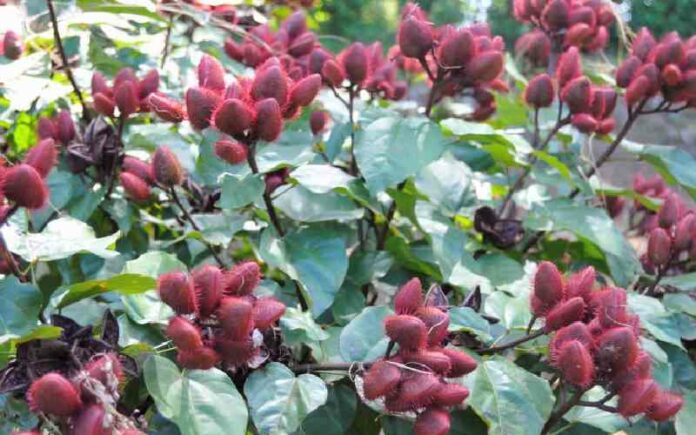|
Getting your Trinity Audio player ready...
|
Bixa fruit, locally known as Mrangi has traditionally been one of the economic mainstay for people in the coastal region.
The crop is known for its bright red fruits that have numerous seeds and is cultivated in Kwale, Kilifi, and Lamu counties.
Bixa is harvested for its seeds, which contain bixin, used for colouring cheese, fish, salad oil, and margarine. The industrial crop is also used as a dye in the pharmaceutical and cosmetic industries.
According to Jeremiah Kilalo a farmer in Mrima Kwale County, the crop matures fully in four to five years and has an economic life of 20 years. Harvesting can be done after one year, though it is discouraged
“The crop is disease and pest-free and is drought-resistant. As they ripen, the fruits dry and harden into red capsules,” said Mr Kilalo.
Herman Gathoga: How I manage my 780 piggery unit in Kiambu
Harvesting involves cutting of mature pods from the tree which are then shade-dried and eventually threshed to produce the seeds that are cleaned, dried, and packed in gunny bags ready for collection.
On his three-acre farm, Kilalo harvests about 3,000kg per year and sells directly to Kenya Bixa Ltd at Sh65 per kilo.
Kenya Bixa is an agro-based company in Tiwi, Ukunda, Kwale County, which produces, buys, stores, and processes Bixa seeds into natural food colours.
According to Stephen Gambo an Agriculture Manager at Kenya Bixa Limited, in one acre of land, a farmer can plant 160 trees and each tree will produce 20 kilograms of Bixa, totaling 3,200 kilograms. He notes that a kilo can fetch between Sh45 to Sh70.
The crop is the world’s second most important natural colourant and is used to produce about 70 percent of the world’s natural dyes.
Kenya is among the major exporters of Bixa in the world and its key markets for the fruit are Denmark, the USA, Japan, China, and the UK.








